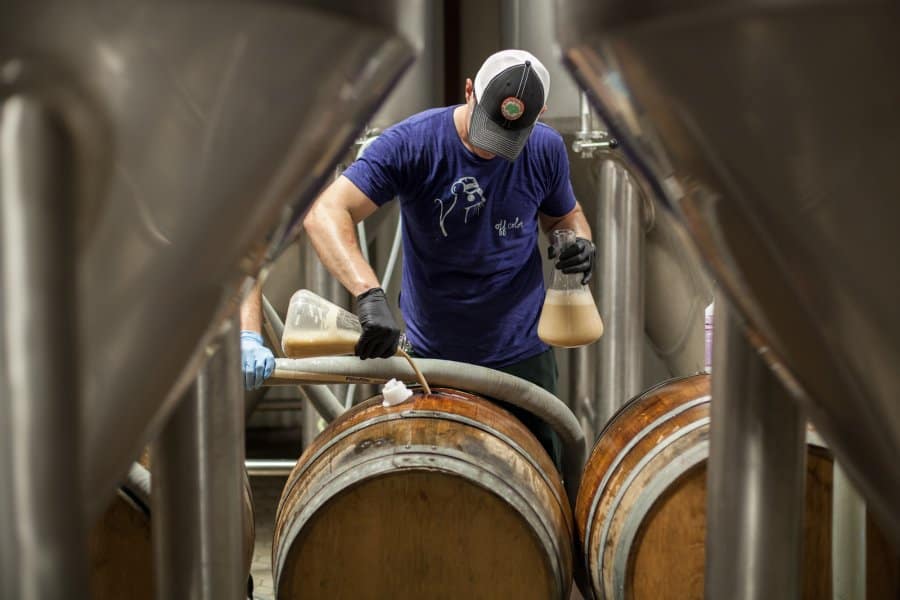When designing our first festival here at Penrose Brewing, we wanted to bring together some of our closest brewing friends who make some of our favorite beer styles. Our focus for this turned to the wild and funkier styles of the world in an effort to help educate people on the similarities and differences between them all.
WHAT IS FUNK AND WHY DO WE CELEBRATE IT?
We use the term funk here in a loose definition of the way we use the term wild. To us, wild and funk beer means the beer uses non-traditional brewing yeasts or bacteria. By traditional definitions, most beer is either made with Saccharomyces cerevisiae or Saccharomyces pastorianus yeasts. On the ground level, this breaks out to ales vs lagers. However, over the years many additional organisms like Brettanomyces, Lactobacillus and Pediococcus have made their way into styles from Berlin to Brussels to London.
So funk in this case is used to describe non-traditional beer yeast. Breaking this down, you can still use these in addition to traditional beer years or own their own, giving each use and organism the ability to bring out unique and interesting flavor profiles. For the inaugural year of our festival we’re focusing on three distinct uses that are more process-based than particular organism-based: kettle souring, primary fermentation and extended aging.
KETTLE SOURING
Kettle souring is often done with pure strains of lactobacillus bacteria over a short, few day period of time. This usually creates a bright, clean acidity to a beer. Try a few of these among others at the festival: Yuzu Fierce from Off Color, Kettle Superstar from Mikerphone and Blood of the Flamingo from Cruz Blanca.
PRIMARY / BRETT FERMENTATION
All beer goes through a fermentation. Using different strains of Brettanomyces in place of or in addition to Saccharomyces can bring out fruitier profiles or flavors of what we like to call funk, using descriptors of hay-like, rustic or spicy. Brewery Vivant’s Escoffier, Central State’s Raznarok and Perennial’s Savant Beersel are a few examples you’ll be able to try.
SECONDARY FERMENTATION / EXTENDED AGING
Often done in previously used oak barrels, mixed cultures of yeast and bacteria impart diverse flavors that at their best are balanced with each other. These can have assertive acidity, strong oak tannins and prominent barnyard notes. Don’t miss Une Année’s Le Grand Monde, Cuvée D’Industrial from Allagash and Woodfour’s Lydia ’15 at the Celebration of Funk.
Wild beers can be hard to categorize or lump into a common group due to their varied process styles, brewer preferences and organisms used, but for now, these are our qualifiers for this celebration of things we deem funky. We hope you’re able to come try some of these beers with us on Saturday, September 30th from some of our best friends around.
Cheers!
Tom

